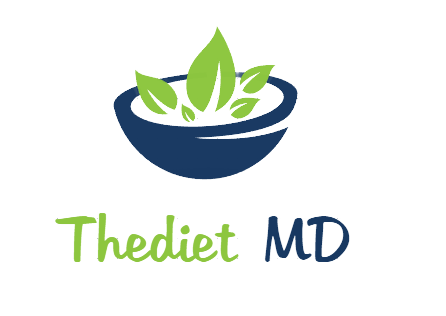Mint is a very popular herb, being used in many ways around the world. For example, peppermint tea helps relieve bad digestion, while the essential oil is used in aromatherapy and serves to treat nausea, headache and relieve nasal congestion.
Even chewing the fresh leaves of one of the various types of herb serves medicinal purposes, being a practical and quick solution to combat bad breath.
These are just some of the numerous health benefits of this plant. Want to know more? So keep reading!
Table of Contents
Main Health Benefits of Mint
Helps fight worms
The first benefit of mint, according to specialist in herbal medicine, Danilo Ramon, is in the treatment of intestinal parasites.
The herb was the subject of a survey carried out by the Ministry of Health which confirmed that the essential oil extracted from its leaves has the ability to stop the proliferation of some species of worms, by preventing the fixation of their eggs.
With this, it prevents an infestation from occurring, in addition to favoring the expulsion of adult invaders from the body.
Improves breathing and relieves nasal congestion
The herbalist explains that the plant is able to improve breathing and clear the airways that are clogged with mucus (phlegm), which is a very common symptom of several respiratory problems.
What happens is that it is rich in a substance called menthol, responsible for the refreshing sensation of the herb. When used in aromatherapy, it serves to relax the nose area and bring the feeling that the air “goes in easier”.
In addition to unclogging the nose, inhaling menthol, which is a bronchodilator, relaxes the lungs, which serves to facilitate the expulsion of phlegm. As menthol is absorbed through steam, you can enjoy this benefit by dropping a few drops of the oil away from your eyes or just breathing in the aroma.
Soothes headaches and muscle pain
“Its essential oil, made up of compounds such as menthol and menthone, favors the relaxation of the nervous system when detected by olfactory sensors,” explained the expert.
In addition, the professional highlights that this compound can “activate some points that are used in acupuncture to eliminate headaches , in addition to alleviating pain in the spine and other parts of the body when massaging”.
A scientific article published in the journal Natural Product Radiance, described that this happens because the oil that is extracted from the leaves stimulates the skin sensors that sense the cold, so it causes that “cold feeling” and a topical analgesic effect.
Furthermore, the publication reported that menthol is a potent vasodilator and enhances the action of other products, which is why it is frequently found in topical pain medications.
Favors digestion
You know that bloated feeling when you don’t digest your meal properly? Because drinking the tea, or the leaf macerated with water, brings a quick relief from this.
What happens is that, “with its antioxidants and nutrients, mint activates the action of salivary glands and enables the relaxation of the stomach muscles, which act positively on digestive enzymes, thus favoring the entire digestion process”, explains the specialist.
Decreases nausea
This digestive effect of mint also makes it effective in treating nausea and vomiting. The tea or essential oil can be drunk before or after meals and will help remove what is causing the nausea as it is digested faster.
In aromatherapy, it works by relaxing the nervous system and, consequently, the stomach, which reduces the muscle spasms that trigger vomiting. And the best thing is that this method can be used by pregnant women, as it has no side effects.
Soothes and reduces anxiety
Did you know that consuming or inhaling peppermint oil helps to relax and, in addition, relieves anxiety ? Well, according to Danilo Ramon, the herb is a cheap and natural solution for those who suffer from stress and want a quick solution to the problem.
This is due to the effect of menthol and menthone in promoting nervous system relaxation. Because it has a sedative property, it relieves anxiety and stress, in addition to improving sleep quality.
Eliminates bad breath
“Chewing the leaves is also useful against bad breath, ” explained Danilo. This is because its aromatic compounds, particularly menthol, are powerful antibacterial agents.
This property prevents the proliferation of various types of bacteria that naturally live in the mouth and stomach. Thus, chewing the fresh leaves prevents these microorganisms from multiplying in an exaggerated way, which contributes to the bad smell in the mouth.
What are the most common types of mint?

“There are several types of mint, but the benefits are similar in all varieties” informed Danilo, noting that even having several similar properties, some types of mint are more suitable for certain treatments.
One of the most common types used in the world is peppermint ( Mentha piperita ). This mint variation is mainly recognized for its strong, characteristic flavor and use as a flavoring. “Peppermint is considered the most effective in the treatment of digestive problems and pain relief, as it has higher concentrations of menthol,” said Danilo.
Its leaves are small, dark green, oval-shaped and have a strong aroma characteristic of the variety. In some places, it is also known as mint-da-folha-miúda.
Another type commonly found in Brazil is the green mint ( Mentha viridis ), which has larger and wrinkled leaves. “The leaves are widely used in cooking, but it is quite powerful to fight intestinal worms, it is also great calming and digestive”, said the expert.
There is also wild mint ( Mentha longifolia ), which is considered a weed but has several medicinal properties and is widely used in some regions of Brazil. This variety has larger leaves than the other species, about 10 centimeters, and purple flowers that open in summer. It is also rich in menthol so it can be used as a mild tranquilizer, digestive and natural analgesic.
Home Remedies with Mint Recipes

Mint tea
To make the tea you just need to add 2 tablespoons of the fresh leaves to a cup of boiling water and let it rest for 10 minutes. After that just strain and drink.
TIP : If you use the dried leaves, let the tea boil for a few minutes to get all the medicinal properties of the herb removed.
Mint water with garlic
“To eliminate worms you can mash 3 leaflets and 1 clove of garlic for each glass of water, or use pure mint in the preparation of juices”, recommended the herbalist, indicating that the juice should be made with the juice of a leaf of mint for every glass of water.
Mint Oil for Massage
Spearmint essential oil is readily available in pharmacies or health food stores and can be used in drops to decongest the nose, massage painful areas and even relieve irritation caused by insect bites.
TIP : Danilo emphasizes that this oil should not be used near the eyes as it causes burning, due to the presence of menthol and menthol.
Contraindication
The consumption of mint is not contraindicated, but it is necessary to have common sense regarding the dosage used and always consult a specialist to guide and supervise the treatment.
Essential oil must be used with care, as it can cause allergies in sensitive people. It should also never be applied directly to children’s noses, as it can cause spasms and respiratory arrest.
My name is Ellie Lauderdale, MD and I am USA based professional Nutritionist .
I am a Registered Dietitian Nutritionist and board certified specialist in sports dietetics who is trained in integrative medicine. I have worked with hundreds of clients, from those suffering with chronic disease to professional and olympian athletes. My goal is to help optimize you from the inside so that you can feel, perform, and look your best on the outside.


